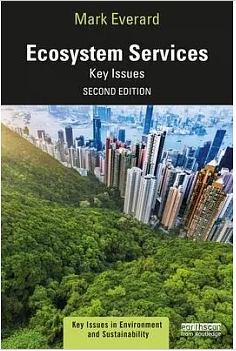![]() class schedule
class schedule
Week 1: Course Introduction
Week 2: Introduction to the Four Major Inequality Issues Caused by Globalization
Week 3: Introduction to Sustainable Development Goals Unit 1: Ecosystem Services
Week 4: Air and Water Cycles
Week 5: Oceans and Rivers
Week 6: Wetlands
Week 7: Land: Forests
Week 8: Biodiversity - Terrestrial Organisms: Starting with the Collective Death of Bees
Week 9: Biodiversity - Aquatic Organisms: Starting with the Death of Coral Reefs
Week 10: Midterm Exam: Submitting Reports Unit 2: Industrial Revolution, Energy, and Human Society
Week 11: Energy History Part 1
Week 12: Energy History Part 2
Week 13: Green Energy Part 1
Week 14: Green Energy Part 2
Week 15: Energy Transition and Land Justice
Week 16: Final Exam: Uploading Group Video Reports and Presentation Files
![]() evaluation
evaluation
Class participation: 10%
Class discussion assignments: 20%
Regular quizzes: 20%
Midterm exam: 20%
Final exam: 30%
In the first week, the basic concept of carbon footprint will be introduced. Students will be given two months to explore and come up with personal methods to reduce carbon emissions. The midterm exam report must propose practical ways to reduce carbon footprint and provide the actual CO2 reduction amount. Students must independently select carbon footprint calculation formulas and data to calculate their own carbon footprint as university students through daily actions and tools.
![]() reference book
reference book
Everard, Mark. (2017) Ecosystem Services: Key Issues. Routledge: New York.
Ecosystem services is one of the most powerful guiding principles for ecology, biodiversity conservation and the management of natural resources. It provides the basis of assessing the multiple values and services that ecosystems can provide to humankind, including diverse issues such as carbon sequestration, flood control, crop pollination and aesthetic and cultural services. The second edition of Ecosystem Services: Key Issues has been fully revised and updated to address policy and scientific developments, as well as new and emerging issues, such as nature-based solutions, zoonotic diseases and environmental justice. It includes new and updated case studies from across the world and each chapter contains further reading, learning objectives and discussion questions to aid student learning. The book details the historical roots of ecosystem services in the second half of the twentieth century, through initiatives such as the Millennium Ecosystem Assessment, The Common International Classification of Ecosystem Services (CICES) and the United Nations Sustainable Development Goals. It shows how ecosystem goods and services can be categorised and valued in economic as well as non-monetary terms, while also highlighting some of the difficulties and limitations of valuation techniques. The author describes how themes such as systems thinking, social-ecological resilience and natural capital relate to ecosystem services, and how these can contribute to more sustainable and equitable development

photo credit 博客來






 留言列表
留言列表